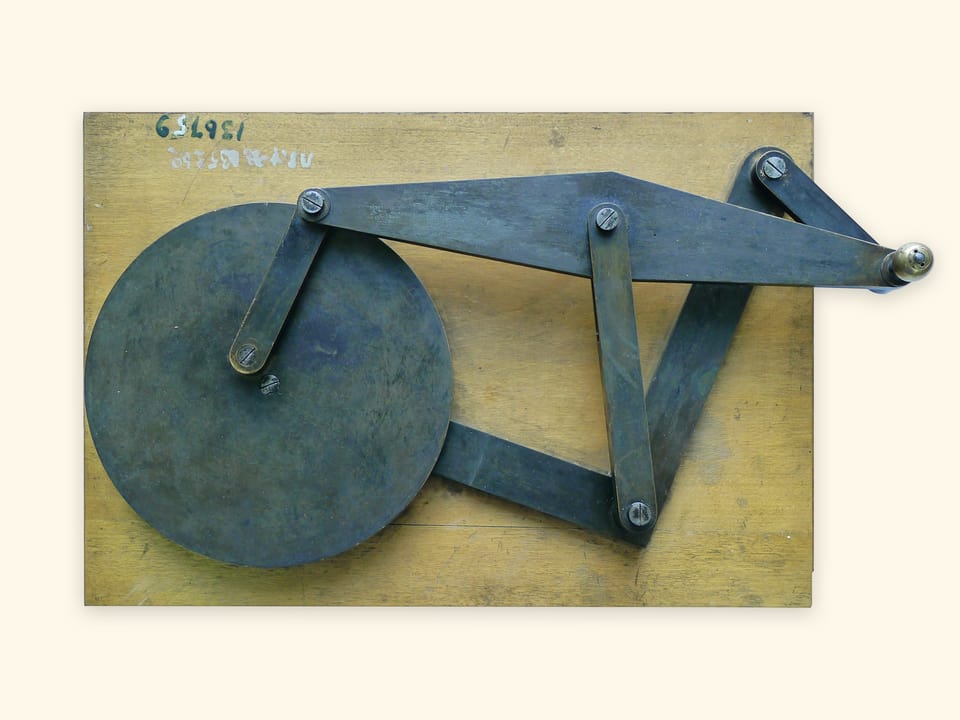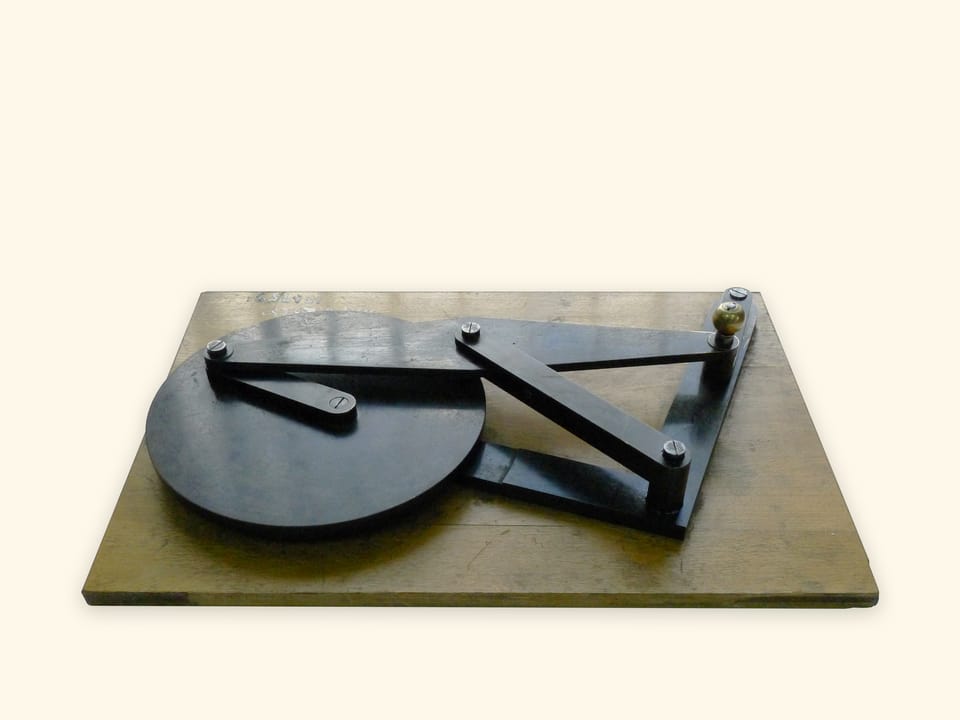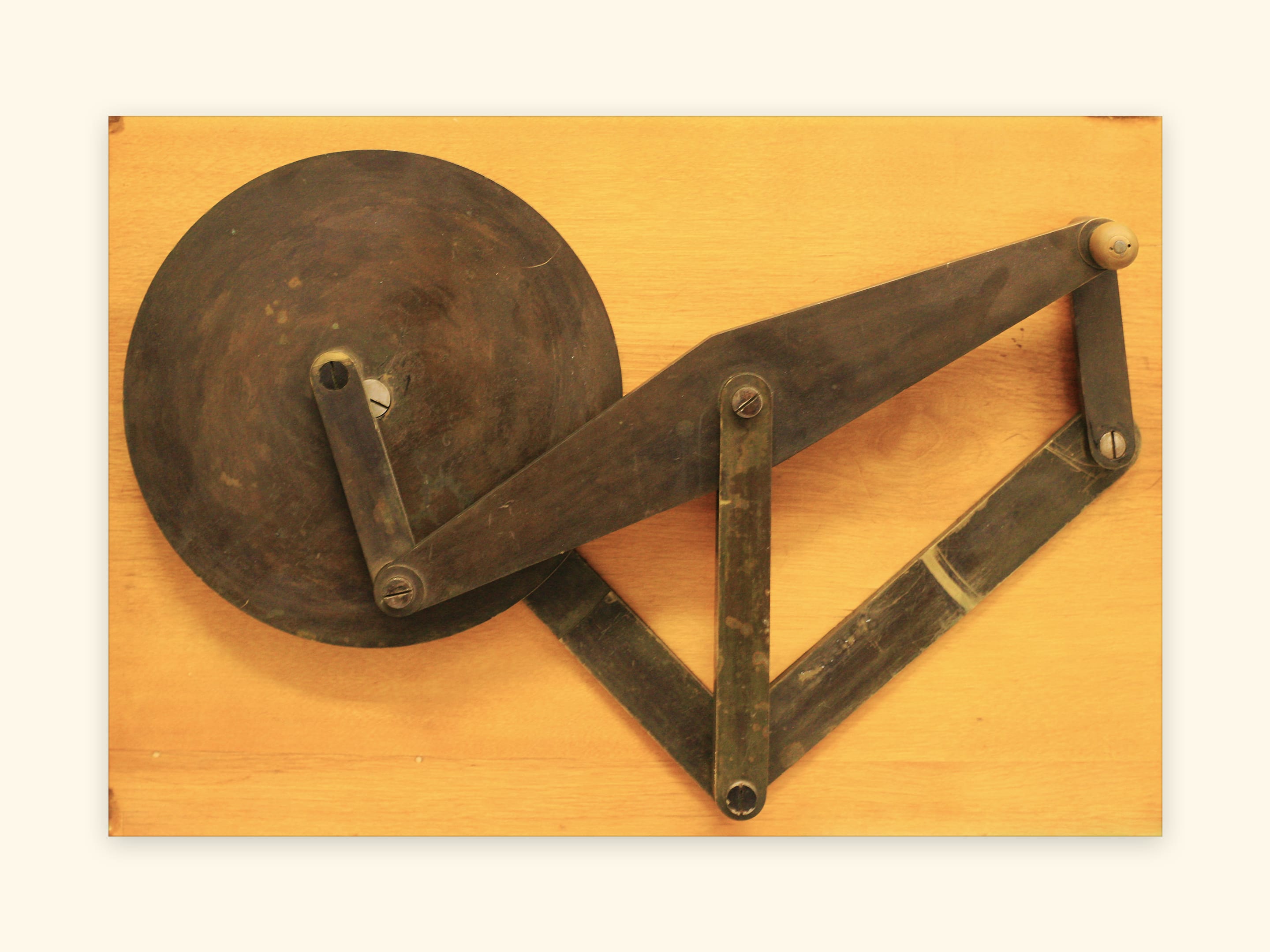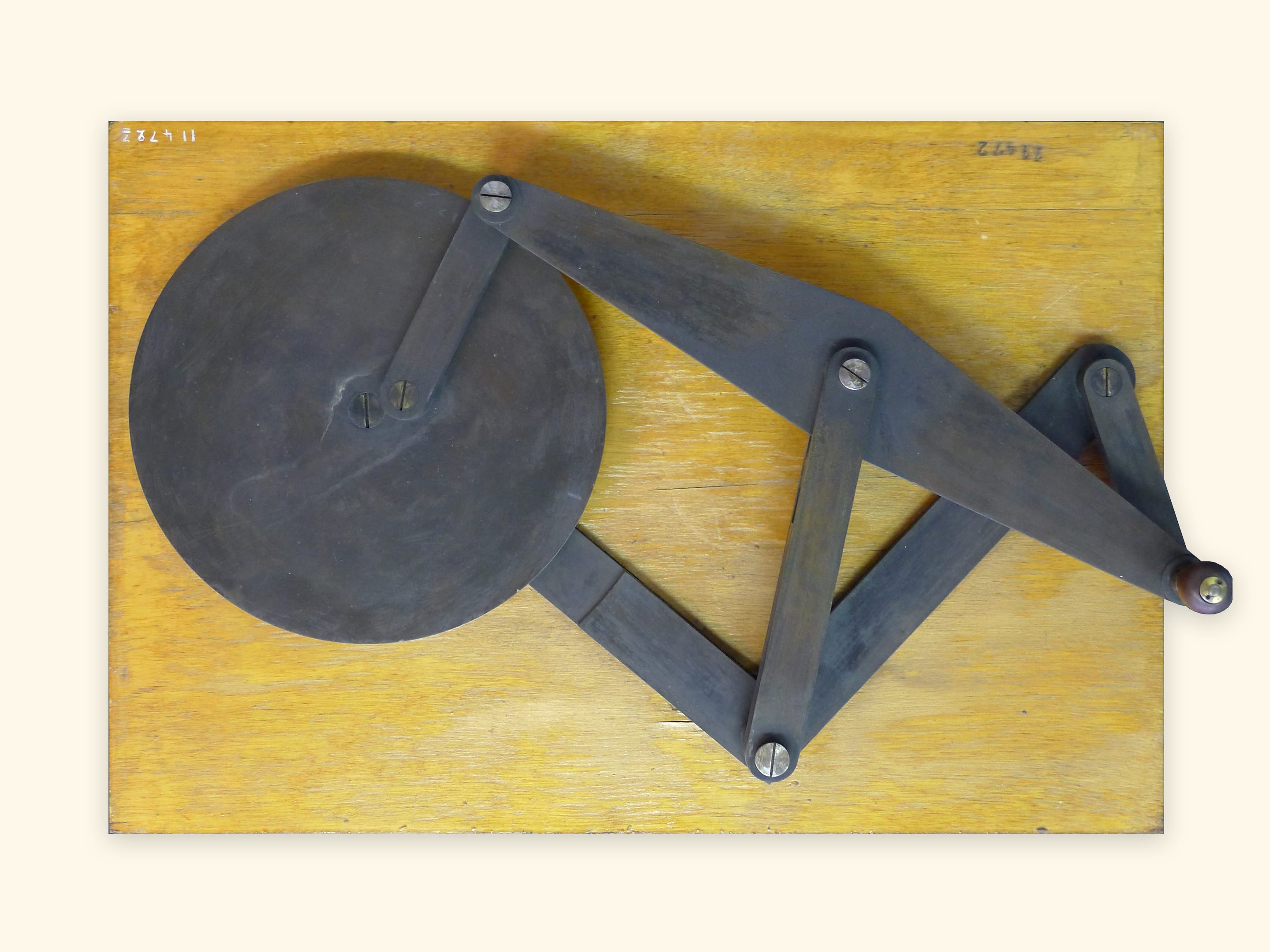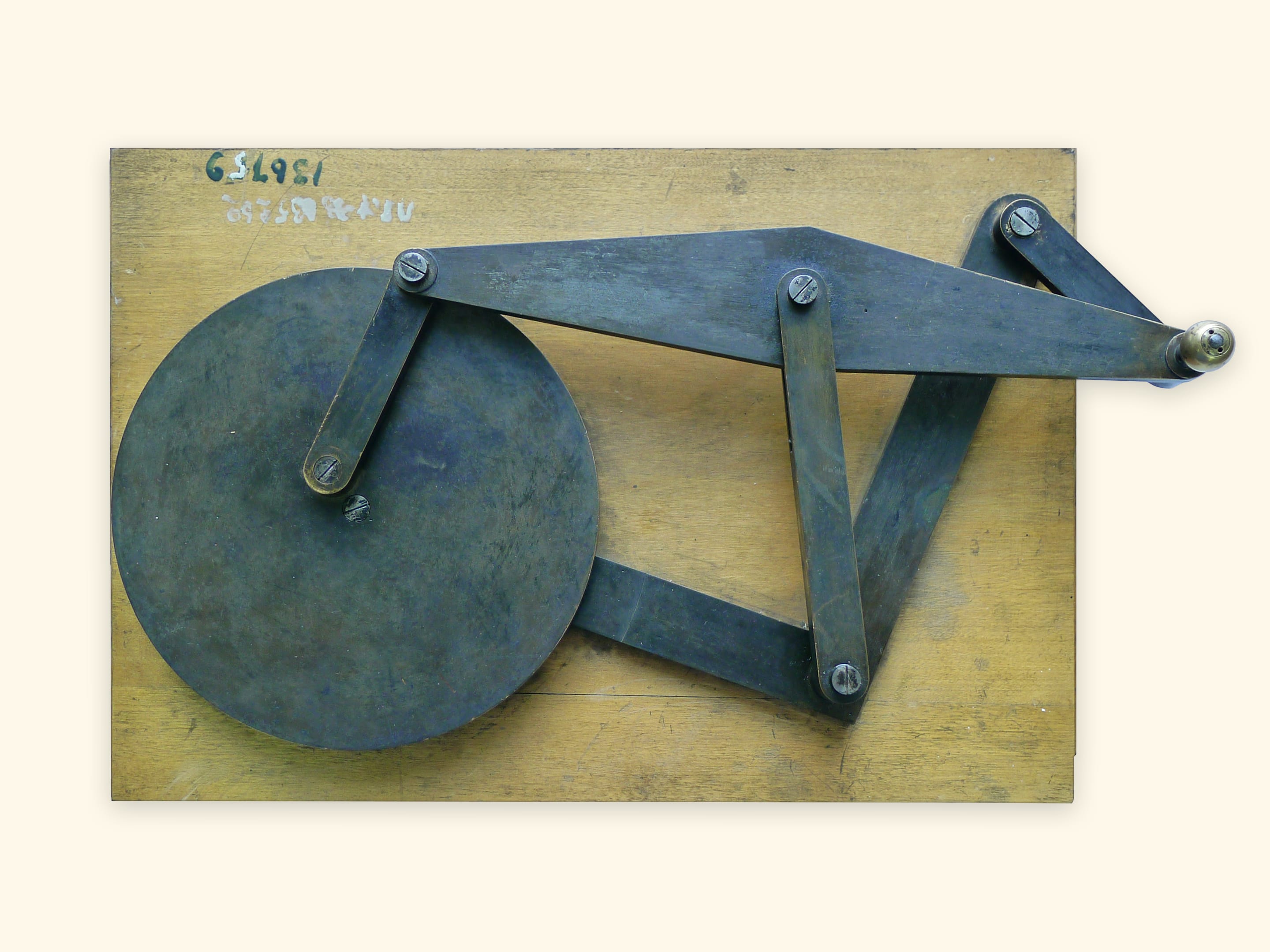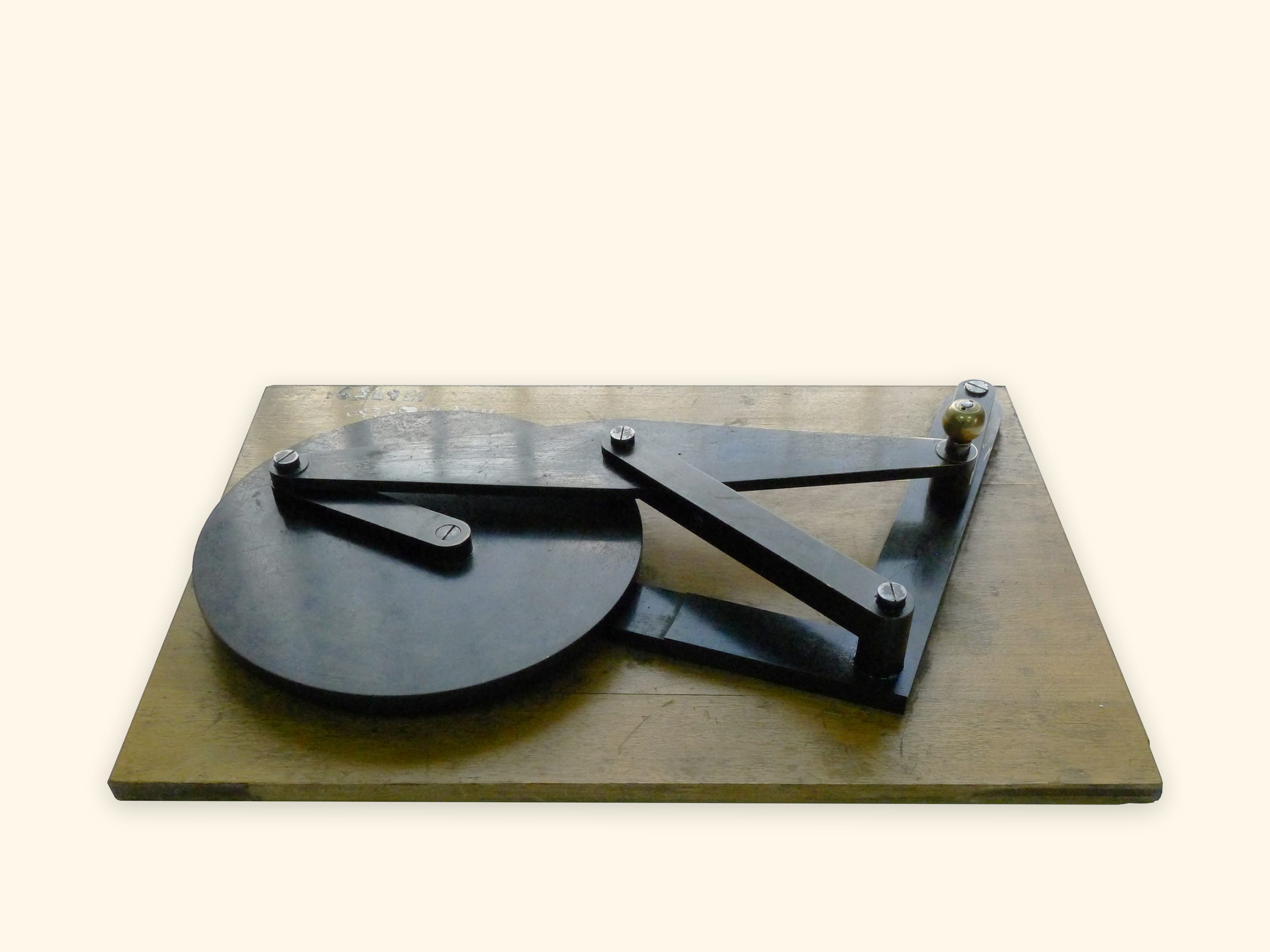Museums and archives
Mechanism is stored in the Polytechnic Museum (Moscow, Russia); fund repository, PM № 19461.
Mechanism is stored in the Musée des arts et métiers du Conservatoire national des arts et métiers (Paris, France); CNAM № 11472-0007.
Mechanism is stored in the Museum of the History of Physics and Mathematics of Saint Petersburg State University (Peterhof, Russia).
Original papers by Tchebyshev
On the simplest joint system causing motions symmetrical near the axis / After: The complete works of P. L. Tchebyshev. Vol. IV. Theory of mechanisms. — Moscow-Leningrad: AS USSR. 1948. P. 167–211. (Russian)
Research
I. I. Artobolevsky, N. I. Levitsky. Tchebyshev's Mechanisms / In: P. L. Tchebyshev’s Scientific Heritage. Iss. 2. Theory of mechanisms. — Moscow-Leningrad: AS USSR. 1945. P. 30–32. (Russian)
I. I. Artobolevsky, N. I. Levitsky. Models of mechanisms of P. L. Tchebyshev / In: The complete works of P. L. Tchebyshev. Vol. IV. Theory of mechanisms. — Moscow-Leningrad: AS USSR. 1948. P. 215–217. (Russian)
Other sources
Engines invented by academician Tchebyshev // Vsemirnaya Illustratsia (World Illustration). 1893. № 1275. P. 17. (Russian).
Description
Which transformation of curves can perform the given linkage with a single fixed red hinge?
Let the gray hinge follow the curve symmetric with respect to the line passing through the fixed red hinge. One can show that in this case the trajectory of the blue hinge will also be symmetric with respect to some line passing through the fixed hinge. A russian mathematician Pafnuty Lvovich Tchebyshev investigated the question of this trajectory.
An important case of the gray trajectory is a circle.In practice it's realized by adding a fixed (red) hinge and a leading link of some length.
Important cases of the blue trajectory are those similar to a line segment, a circle or its arc. Tchebyshev writes: "Here we consider the cases that are the simplest and most common in practice, that is to obtain motion along a curve, a significant part of whom doesn't differ much from a circle arc or a straight line."
Exactly to the question of finding the best parameters of this mechanism, solving practical problems, Pafnuty Lvovich applies for the first time the theory of function approximation, that he developed studying the Watt parallelogram.
Choosing the distance between the fixed hinges, the length of the leading link and the angle between the links, Pafnuty Lvovich obtains a closed trajectory not differing much from a straight-line segment. The deviation of the blue trajectory from a straight one can be decreased changing the parameters of the mechanism. However, the stroke of the blue hinge will decrease as well. But this happens more slowly that the decrease of the deviation, so one can choose appropriate parameters for a given application. This is one of the variants of an approximate straightening mechanism proposed by Tchebyshev.
Let's move to the case of similarity of the blue curve with a circle.
Considering the case when the links form a line, we come up with a mechanism that looks like the greek letter lambda. Tchebyshev used it with some parameters to build the first «tangent to two concentric circles, remaining between them. By changing the parameters of the mechanism, one can reduce the distance between the concentric circles, within which is the blue trajectory.
Improve the lambda-mechanism by adding a fixed hinge and two links, whose sum of the lengths is equal to the radius of the larger circle, and the difference: the radius of the smaller one.
The mechanism we get has bifurcation points, or as one says, singular points. Being in such a point during the same clockwise motion of the lambda-mechanism, the links may sixsuch bifurcation points: when the added links are on the same line.
There is a big and important brach of mathematics, singularity theory, that studies singular points. A very simple and important case is the study of function behavior through studying its points of maximum and minimum.
In order for our mechanism to pass the six singular points in a preselected direction, a small link is associated with a flywheel, which being promoted in some way, conducts the mechanism from a singular point rotating in the same direction.
If one twists the flywheel, as well as the leading link, clockwise from the point of bifurcation, then in one turn of the leading link the flywheel will do two turns.
If one twists the flywheel, counterclockwise from the point of bifurcation, then in one clockwise turn of the leading link the flywheel will do four turns!
Therein lies the paradox of this mechanism, invented and made by Pafnuty Lvovich Tchebyshev. It might seem that a flat hinge mechanism must operate unambiguously, however, as we see, this is not always the case. And the reason is the singular point.






